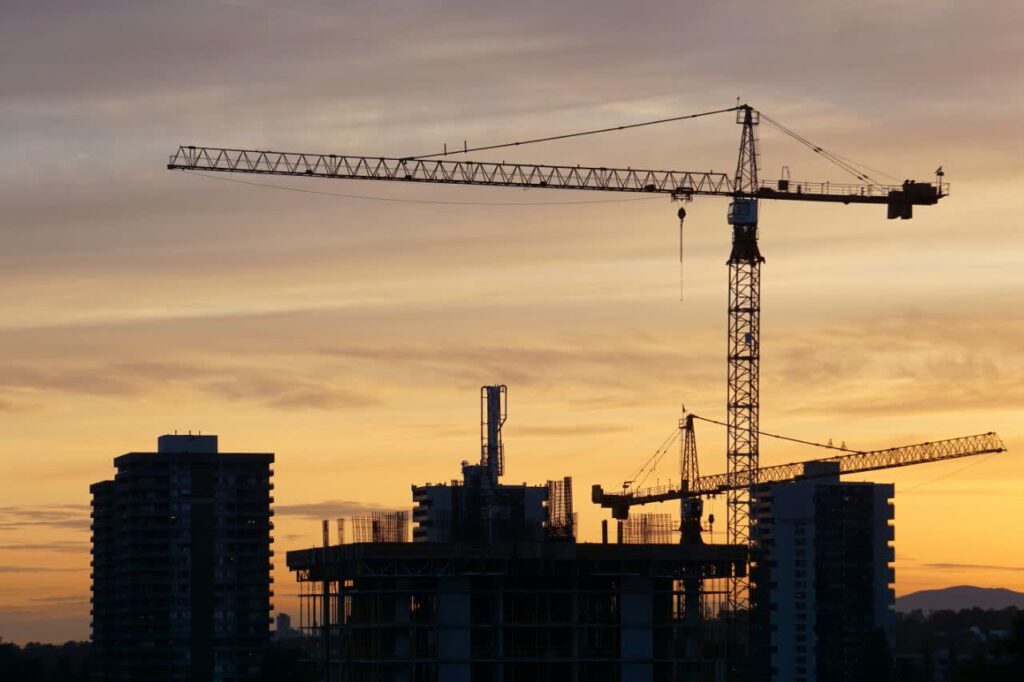Exclusive Neuroject Article: Starting a construction business is not cheap. It requires significant investment. You probably can’t cut corners in construction because that means spending more money in the long run. However, there are a few ways to reduce expenses and cost saving technologies in Construction. Today, the technological equipment created by humanity deals with these issues. These devices help people do construction work faster than in the past. Besides cost saving technologies in construction, it also ensures the security of the project.
The construction industry is an interdisciplinary field, and along with architecture and civil engineering, it also plays a key role most of them are made of artificial intelligence. These cost saving technologies in construction affect all stages, from site analysis, and energy, to the security section. This article introduces some of these technologies.
Table of Contents
Introduction to Top 7 Cost Saving Technologies in Construction
The building sector, a foundational supporter of human needs, has traditionally experienced a range of difficulties over the course of its history. Engineers, managers, and employees alike have experienced disruptions as a result of these difficulties. All stages of the conventional construction process have been plagued by high costs, and there has been a huge loss of resources and labor, so they decided to reduce some of the costs with cost saving technologies in construction. Additionally, the negative effects of demolition and building waste on the environment have pushed the move from traditional to modern approaches, leveraging technology breakthroughs.
Construction has undergone a transformational process in response to these difficulties, following other industries’ development. Notably, artificial intelligence has become a key participant in this industry and is transforming it. Cost Saving technologies in Construction have a wide range of effects, including higher speed, lower costs, better control systems, and increased workplace safety. The industry has embraced the power of mobile applications for construction management in tandem with material innovation.
This strategy allows for real-time management program adjustments, assuring agility and effectiveness. By assisting with site identification, topographical study, and cost estimation, drones have also earned their place. By utilizing these technologies, hazards to workers are reduced while costs are also decreased. The purpose of this article is to examine seven cost saving technologies in construction approaches. These techniques collectively enable people to minimize the use of time and energy, highlighting the sector’s dedication to development and sustainability.
Suggested article for reading: AI in Construction
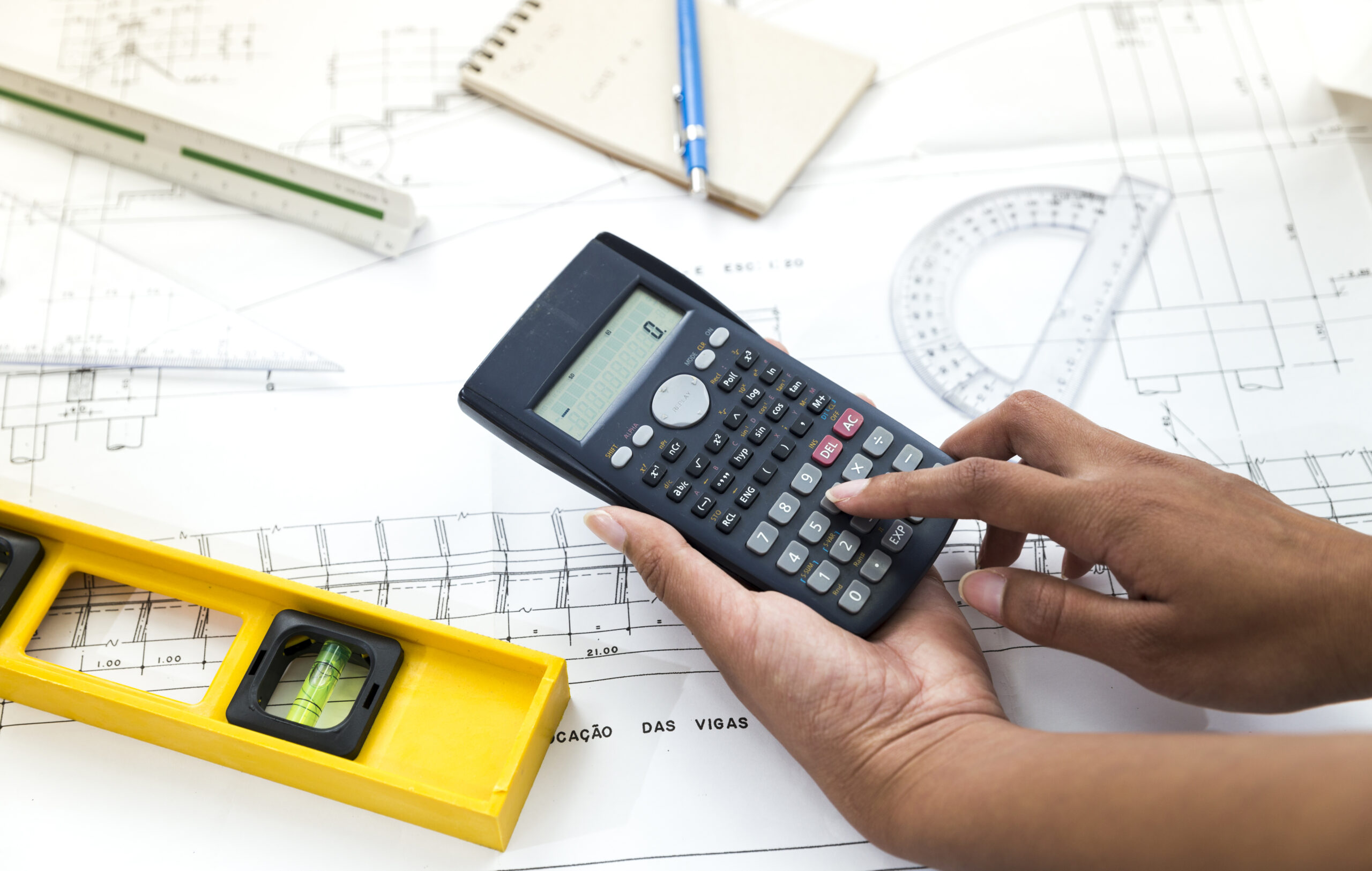
1. Building Information Modelling (BIM)
BIM is a computerized tool that aids in more effective building planning, design, and construction for architects, engineers, and contractors. Costs are ultimately decreased because it enables more efficient resource usage throughout design, building, and operations. BIM as one of the cost saving technologies in construction also has the capacity to reduce material waste, which helps to reduce construction costs while also safeguarding the environment. How does it contribute to building cost reduction?
BIM-based Thermal Building Simulation: Building volume, shape, size, orientation, insulation levels, window sizes, and airtightness parameters are all taken into account in the simulation. Thermal simulations based on BIM can also be used to compare the effectiveness of various building materials and systems. This information may be utilized to choose the project’s most cost-effective option, demonstrating the value of a BIM-based thermal building simulation as one of the cost saving technologies in construction.
Space Optimization: As mentioned above, BIM may be used to mimic how people walk around areas and provide suggestions on how to better utilize the space by moving furniture, walls, or other elements. Much of this was accomplished through COVID. Additionally, before construction even begins, BIM models offer a 3D representation of the proposed building that is photorealistic. BIM can make it possible to virtually tour a building, which can aid in choosing how to utilize the space most effectively. So one of the cost saving technologies in construction can help to reduce energy waste.
BIM can make it possible to virtually tour a building, which can aid in choosing how to utilize the space most effectively. BIM, which makes use of a 3D model, has emerged as a crucial tool for maximizing the use of space and takes part in cost saving technologies in construction.
Optimization of Construction Site Logistics: A construction site is a chaotic place with a lot of activities going on at the same time there is a constant flow of materials and workers in and out of the site. Properly managing the construction site logistics ensures a smooth workflow and avoids delays or accidents. BIM is one of the important cost saving technologies in construction through need-based purchasing. In the past, construction companies sometimes over-order materials in trying to stay on schedule however this often leads to waste and then cost overruns. Lean methods like Just in Time (JIT) ordering are now helping teams to become more efficient and combined with BIM this can supercharge the savings.
Construction managers may more precisely forecast the amount of material required for a project with BIM by using model-based quantities. Project delays are one of the key ways that BIM lowers the cost of construction projects. Construction experts may follow a project’s progress in real-time and make required schedule adjustments with the aid of BIM-based project management software. This makes it possible to deploy resources more effectively and avoids expensive delays that lower a project’s profit margin. By enhancing coordination between the many teams participating in the project, BIM may not only assist in avoiding profit loss but also is helpful as one of the cost saving technologies in construction.
Using 3D models makes it simpler for architects, engineers, and other experts to identify potential issues and create solutions that will minimize construction-related disturbances. The end result is a more efficient construction procedure that can help save time and money.
Suggested article for reading: BIM in Construction
2. Construction Management Software and Mobile Applications
Smartphones are very popular for personal use, they are becoming crucial for business success. It is estimated that the business travel market is expected to grow by 188% in 2028. When we combine this with growing expectations of 24/7 accessibility, it’s evident that employees need to be able to log into their work while away from their desks. That’s why mobile project management apps ensure you have access to your software from your mobile device, anywhere, anytime.
Why it is important to Use a Mobile App for Project Management? Mobile project management apps provide a competitive advantage to people who use them. With their help, teams will stay on top of project updates, get the newest features, and communicate with each other. It is also one of the seven cost saving technologies in construction. Now, let’s take a closer look and determine why you should use project management apps.
Making Projects Easier
Consider a scenario in which the site supervisor for a $1 million office construction project visits a location to check on the team and get an update. They soon learn that a sizable cargo of construction supplies arrived somewhat harmed and that several welders are absent from work due to flu.
Let’s say they exclusively utilize desktop management software. The supervisor will then need to take pictures of the damage and may need to employ two or more temporary workers to take the place of sick welders before returning to the office to update the project management system. You’ve already had your afternoon check-in with stakeholders by the time the updates are received, and the budget authorization will have to wait until tomorrow, creating delays and costing you a day’s worth of work. Thus it is necessary to utilize one of the cost saving technologies in construction. A mobile project management tool enables your site supervisor to enter modifications right away utilizing the app.
The modifications will take effect immediately and be available for your afternoon check-in with stakeholders. In this instance, temporary welders will be sent from your budget and will arrive the following morning.
It’s easier to update: Project management software frequently needs ongoing upgrades, which aren’t usually automated. Consequently, you will need to search for and update any drivers that your IT administrator has approved. While enhancing mobile productivity, cost saving technologies in construction like project management apps refresh themselves throughout the night or during the day without interfering with or postponing your upcoming appointments.
Keep Your Productivity Everywhere
There are countless apps and project management tools available, all of which promise to be very effective and facilitate users’ productivity. It’s vital to note that project management applications serve several functions, and the best part is that you don’t have to work from your office.
Using the app, you may organize meetings, notify stakeholders, and post notifications on the dashboard in addition to updating information regularly. While assigning tasks, you can also keep track of deadlines and assignments. Each app has its advantages, and you will select one based on your requirements.
Apps give you greater independence while enabling speedier answers and activities when compared to software solutions. Consequently, you and your team may prevent delays and focus on important tasks. Additionally, they can be cost saving technologies in construction.
Reduce Operational Costs with Construction Management Software
The formula for job costing is straightforward: “Material + Labour + Overhead = Total Job Cost.” A project’s costs must be assigned and tracked, and every problem that could affect margins must be found. A detailed method of examining costs across all project levels is job costing. Each expense must be categorized into one of the project’s three sections (labor, materials, or overhead).
The project manager must keep an eye on labor costs if they rise to ensure that they don’t reduce project margins or cash flow. Cost saving technologies in construction with built-in financial management components simplify the process of assigning expenses when they change. The software also makes it easy to find cost overruns and identify trends to make necessary improvements. The benefit of job costing within construction software is that problems are easy to identify.
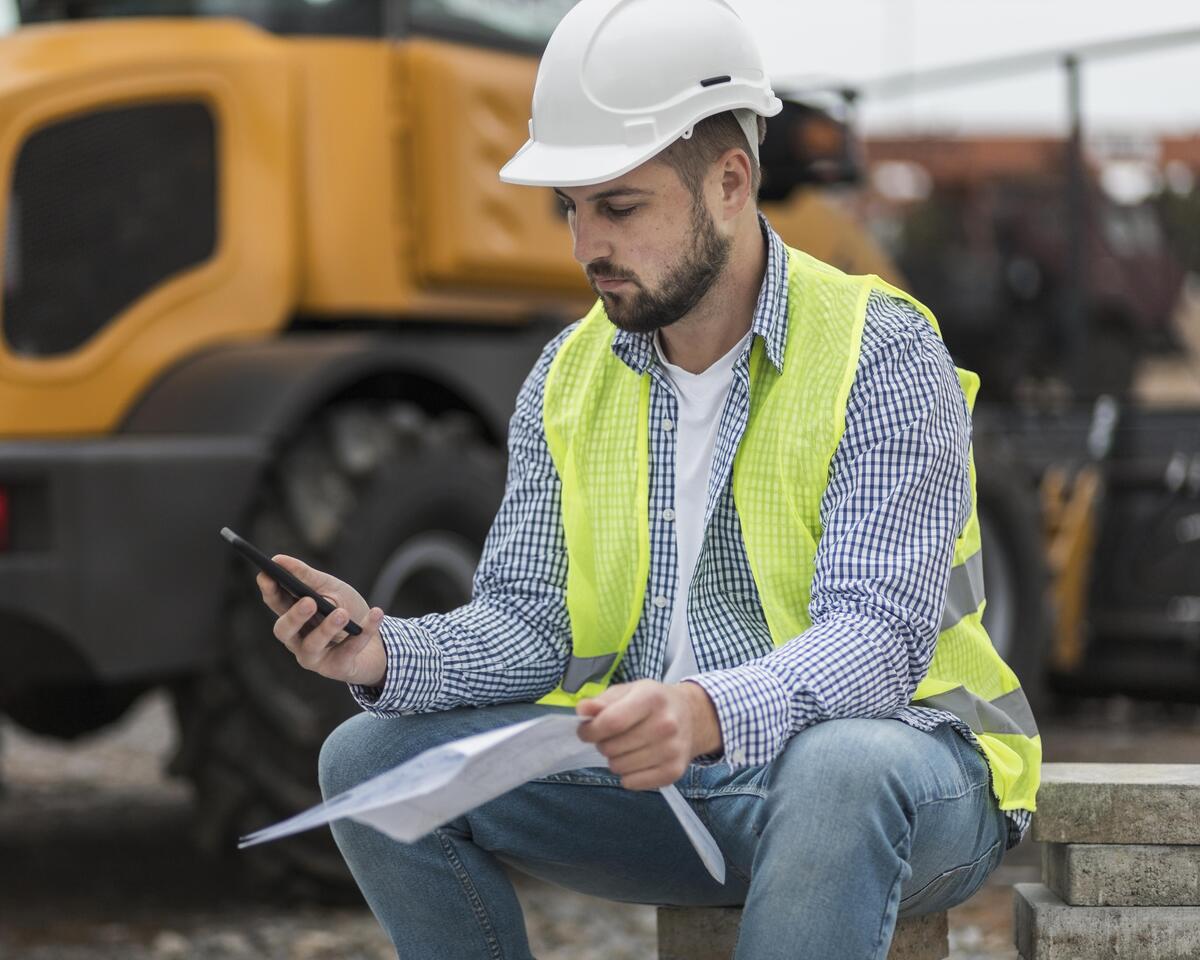
3. IoT Devices Integration
To address these challenges, innovative solutions have emerged, such as IoT-based smart building automation systems. These advanced systems leverage the power of the Internet of Things (IoT) to create intelligent and interconnected building environments. By integrating various sensors, devices, and automation technologies, these systems optimize the management and operation of buildings, making them smarter, and more sustainable. They are also known as cost saving technologies in construction.
How does an IoT-based smart building automation system work?
The Internet of Things (IoT) refers to the interconnectivity of devices, machines, and other items embedded with electronics, sensors, and software. IoT is transforming operations in the construction industry by enabling smarter buildings that use less energy and they are cost saving technologies in construction. An IoT-based smart building automation system connects to the cloud to exchange data with other systems and devices. In turn, this data is used to automate tasks like controlling Heating, ventilation, and air conditioning (HVAC) systems and lighting and monitoring and reporting on building performance.
A variety of sensors collect information about environmental conditions such as temperature and humidity, while other sensors, such as those monitoring water pressure, send information back to the system itself. Some smart buildings may even have sensors that track noise levels or provide alerts when an object has moved within their premises (such as when someone enters through an entrance). Thus these types of cost saving technologies in construction can provide security and comfort.
IoT Use Cases in Construction
While there are hundreds of use cases for the application of IoT in construction, let’s explore four use cases that demonstrate the potential of IoT as one of the seven top cost saving technologies in construction to improve energy efficiency, and promote sustainability.
- Smart energy monitoring
- Intelligent lighting systems
- Predictive maintenance
- Building automation and HVAC optimization
- Smart energy monitoring
Smart energy monitoring is an important part of the IoT construction industry. As a part of smart energy monitoring systems, IoT sensors can be installed in smart buildings to monitor energy consumption in real time. This data can be analyzed in real-time to identify areas of energy waste, optimize energy usage, and implement energy-saving measures, and cost saving technologies in construction. It helps companies track their energy consumption patterns and trends, which can be used to forecast future costs. With this information, you can make better decisions about how much power you need to run your business and when it’s best to use it.
Cost saving technologies in construction like smart meters are an important part of smart energy monitoring because they measure the amount of electricity that passes through them at any given time. These devices send their readings back to a central system that collects data from all over your facility, so you can see what’s going on in real time or on a historical basis. This provides essential information about where your company stands financially related to its electrical usage over time (i.e., whether there are any spikes).
Suggested article for reading: Building Energy Monitoring
Intelligent Lighting Systems
Intelligent lighting systems are a great way to reduce energy consumption and cost saving technologies in construction. IoT-enabled lighting systems can automatically adjust brightness and turn off lights when not in use. By utilizing motion sensors and smart controls, energy consumption can be minimized, resulting in substantial cost savings over time.
These systems can be programmed to automatically turn on and off depending on the time of day, which saves you the hassle of flipping switches yourself. Intelligent lighting systems as an example of cost saving technologies in construction can also help improve safety by illuminating areas where people might need extra visibility. For example, hallways lead upstairs or walkways through parking lots at night time when cars aren’t visible from far away due to poor lighting conditions.
Predictive Maintenance
Predictive maintenance involves using predictive analytics to identify problems before they occur. IoT sensors embedded in construction equipment and machinery can monitor their performance and detect early signs of potential failures. This allows for timely maintenance and repairs, reducing downtime, and they are counted as cost saving technologies in construction.
Predictive analytics uses data collected from sensors and other monitoring devices to predict failures, which allows you to schedule repair or replacement before the actual failure occurs. This helps you reduce downtime costs, increase efficiency in your operations, and improve overall profitability.
Building Automation and HVAC Optimization
HVAC systems are critical components of any building. IoT devices can control and optimize (HVAC) systems based on occupancy, temperature, and other factors. This ensures that energy is utilized efficiently, and resources are not wasted when spaces are unoccupied, leading to significant energy. They are cost saving technologies in construction.
The HVAC system can account for about 40% of total energy consumption in commercial and residential buildings. The complexity of these systems makes them difficult to monitor, which can lead to inefficient operation and high maintenance costs. HVAC optimization can help reduce energy costs by providing detailed information about how your building’s HVAC system is performing over time, so you can identify opportunities for improvement.
By implementing an IoT-based smart building automation system, as one of the cost saving technologies in construction, you can make your buildings more efficient, and reduce environmental impact. An IoT-based smart building automation system can help you monitor the energy consumption of all your buildings in real-time and identify potential areas of improvement. This allows you to make changes before they become major issues that cost more money to fix later.
Suggested article for reading: Construction HVAC

4. Drone Technology for Site Analysis and Inspection
Drone is used as one of the cost saving technologies in construction and is becoming widespread. Without them, these businesses will lag behind their competitors in the industry. It therefore pays to be aware of how processes are affected by construction drones at all phases of the building cycle. This will assist you in choosing the ideal drones for your construction projects, combined with a grasp of how various construction drones operate for various applications. Let’s first examine the six ways they will assist you in managing your building site:
Significantly Safer Sites: Drones capture 3D views of worksites with centimeter-level resolution and accuracy. So you can say goodbye to climbing poles, being suspended by ropes, and surveying stockpiles on foot around active machinery. Gone too are the site shutdowns and unspeakable impacts of construction site incidents related to surveys or inspections.
Did you know that between six and nine percent of construction project costs are injury-related? This leads to increased insurance prices and reduced profit margins. Drones are cost saving technologies in construction. A deadly accident can end a construction company altogether, Instead, a construction UAV allows a surveyor to gather life-like looks at every detail of your site from a distance—simply plan a flight, gather the data, and process it for planning, inspection, and infrastructure maintenance purposes. Drone data outputs also enable security views of perimeters. Breaches can be identified and addressed much faster.
Massive savings on survey-grade site surveys with cost saving technologies in construction: Before construction drones, topographical, planning, and inspection insights were often based on disjointed information that took days to gather, analyze, and share. Since sites progress fast, this information was always slightly outdated. It’s now possible to gather precise, photorealistic details across an entire active site area in a matter of hours, with just one or two drone pilots leading the collection.
This means that at every stage of your project, fast, comprehensive, and accurate views and analytics are available, on-demand, to all site managers, contractors, and stakeholders, within hours not days. Plus, if you are conducting frequent drone construction surveys, their outputs are on record to answer questions or assess details with a click of a mouse rather than the time of a worker to drive out and check. And this illustrates how can improve jobs with cost saving technologies in construction.
Suggested article for reading: Drones in Construction
Real-Time Tracking (Via Updated, Accurate Construction Drone Data)
Miscalculations are only natural when hundreds of decisions are made on a construction site every day. Drone data gathered at regular intervals allows project managers to check all areas of a site not only for progress but also for the exact alignment of as-planned to as-built.Many times, the earlier any error is caught in the process, the less costly it is to rectify, and the less delay it costs the entire project. So drones as one of the seven cost saving technologies in construction are useful.
Regularly updated views of activity across a site allow tracking and save countless hours and expensive delays. Missing and stolen equipment is also a reality on busy construction sites. In fact, in the most recent annual equipment theft report by Verisk, stolen equipment costs the construction industry USD 1 billion per year. Up-to-date site views with centimeter-level resolution also help monitor security fences and the location of equipment regularly saved.
Faster Decisions and Overall Project Times
Key stakeholders are often not situated on sight, and in some cases, they’re not even in the same town. Up-to-date data on cost saving technologies in construction are available on the cloud and instantly to whoever has permission to view and manage it. This saves time and travel, costs when contractors, managers, and owners need information. Instant and updated site views enable checks and validation so that stakeholders get a precise view of as-built and as-planned, make decisions, and approve the next steps. When they can do this from anywhere, at any time, it speeds up overall project times.
Expedited contract reconciliation: When it comes to agreeing on sizes of stockpiles and amounts of earth moved in a certain period, it’s much easier to do with more exact measurements. This is what drones offer. Thanks to high-resolution payloads and photogrammetry software, millions of data points cover each stockpile and surface, offering much more precise volume and progress analytics. All due to utilizing of cost saving technologies in construction.
Imagine daily views, and you start to get an idea of how this prevents long discussions save, during the reconciliation phase. Owners, contractors, and subcontractors are all starting to rely on drone data to compare site activities. Those who don’t, have less to bring to the table. Those who do, simply pull up the files, flip through the days, display measurements, and prove or disprove the claims.
Lower Overhead Maintenance
Collapsing bridges, buildings and other infrastructure have sadly dotted news headlines, followed by reports of damages that must be paid by site owners. The cost of avoiding maintenance checks and infrastructure updates is overwhelming compared to the price of doing it. And drones as cost saving technologies in construction cut the later price down to a fraction of what it was before. They lower that investment barrier and enable governments and asset owners to conduct thorough preventative maintenance.
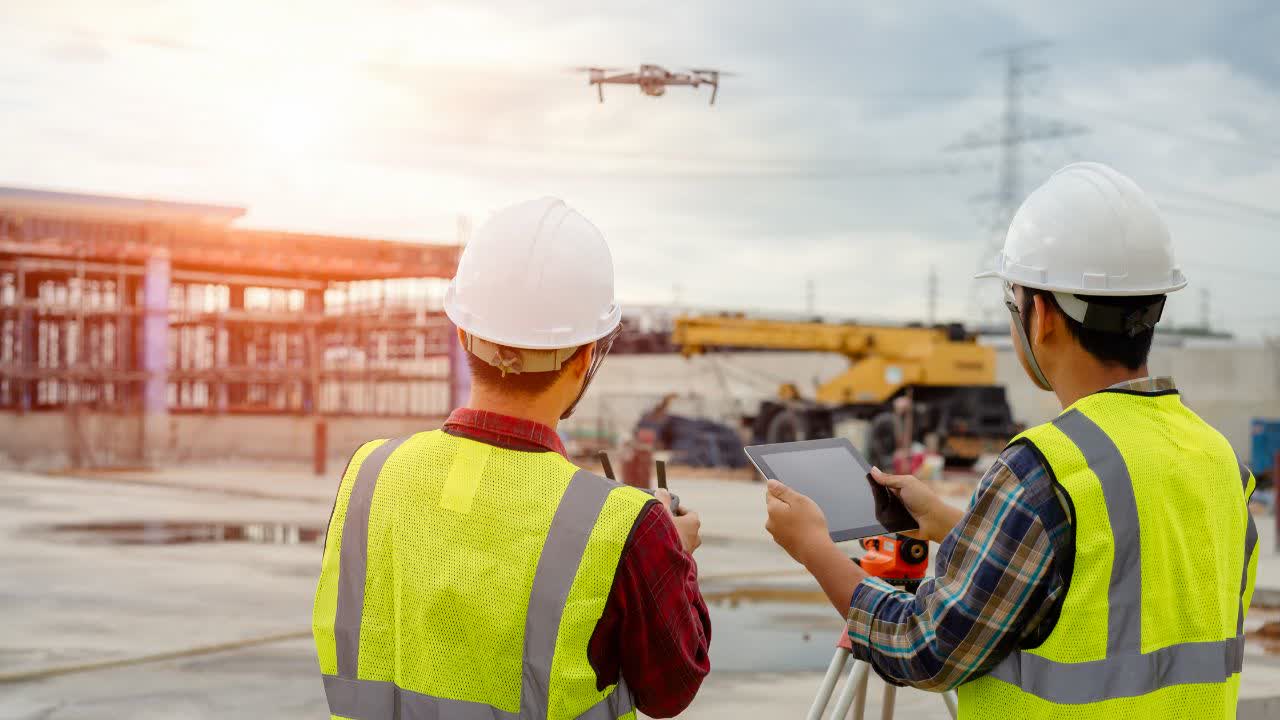
5. Artificial Intelligence and Robotics
Artificial intelligence (AI) is an aggregative term for describing when a machine mimics human cognitive functions, like problem-solving, pattern recognition, and learning. Machine learning is a subset of AI. Machine learning is a field of artificial intelligence that uses statistical techniques to give computer systems the ability to “learn” from data, without being explicitly programmed. A machine becomes better at understanding and providing insights as it is exposed to more data.
The potential applications of machine learning and AI as cost saving technologies in construction are vast. Requests for information, open issues, and change orders are standard in the industry. Machine learning is like a smart assistant that can scrutinize this mountain of data. It then alerts project managers about the critical things that need their attention. Several applications already use AI in this way. Its benefits range from mundane filtering of spam emails to advanced safety monitoring.
what are the benefits of AI in construction?
Prevent Cost Overruns
Most mega projects go over budget despite employing the best project teams. Cost saving technologies in construction like artificial neural networks are used on projects to predict cost overruns based on factors such as project size, contract type, and the competence level of project managers. Historical data such as planned start and end dates are used by predictive models to envision realistic timelines for future projects. AI helps staff remotely access real-life training material which helps them enhance their skills and knowledge quickly. This reduces the time taken to onboard new resources onto projects. As a result, project delivery is expedited.
AI for better design of buildings through generative design: Building Information Modeling as a type of cost saving technologies in construction is a 3D model-based process that gives architecture, engineering, and construction professionals insights to efficiently plan, design, construct, and manage buildings and infrastructure. In order to plan and design the construction of a project, the 3D models need to take into consideration the architecture, engineering, mechanical, electrical, and plumbing (MEP) plans and the sequence of activities of the respective teams.
The challenge is to ensure that the different models from the sub-teams do not clash with each other. The industry uses machine learning in the form of AI-powered generative design to identify and mitigate clashes between the different models generated by the different teams to prevent rework. There are cost saving technologies in construction like software that uses machine learning algorithms to explore all the variations of a solution and generate design alternatives. Once a user sets up requirements in the model, the generative design software creates 3D models optimized for the constraints, learning from each iteration until it comes up with the ideal model.
Risk Mitigation
One construction intelligence company launched in 2017 with the promise that its robots and artificial intelligence hold the key to solving late and over-budget construction projects. The company uses robots to autonomously capture 3D scans of construction sites and then feeds that data into a deep neural network that classifies how far along different sub-projects are.
If things seem off track, the management team can step in to deal with small problems before they become major issues. Algorithms of the future will use an AI technique known as “reinforcement learning.” This technique allows algorithms to learn based on trial and error. It can assess endless combinations and alternatives based on similar projects. It aids in project planning since it optimizes the best path and corrects itself over time. It is one of the efficient cost saving technologies in construction.
Suggested article for reading: Construction Risks
Project Planning
AI as one of the cost saving technologies in construction makes job sites more productive: Some companies are starting to offer self-driving construction machinery to perform repetitive tasks more efficiently than their human counterparts, such as pouring concrete, bricklaying, welding, and demolition. Excavation and prep work is being performed by autonomous or semi-autonomous bulldozers, which can prepare a job site with the help of a human programmer to exact specifications.
This frees up human workers for the construction work itself and reduces the overall time required to complete the project. Project managers can also track job site work in real-time. They use facial recognition, onsite cameras, and similar technologies to assess worker productivity and conformance to procedures.
AI for Construction Safety
Five times as many construction workers die on the job as other workers do. OSHA reports that falls are the greatest cause of private sector fatalities in the construction business (apart from traffic accidents on the highway), followed by being struck by an object, electrocution, and being caught in a machine/bin. A construction technology business with headquarters in the United States develops an algorithm that examines photos from job sites, looks for safety issues such employees who aren’t wearing safety gear, and compares the photos with accident reports.
The company says it can potentially compute risk ratings for projects so safety briefings can be held when an elevated threat is detected. It even began ranking and releasing safety scores for each U.S. state based on COVID-19 compliance in 2020. And it shows how cost saving technologies in construction can help to decline accidents.
Suggested article for reading: Construction Safety
AI for Post-Construction
Building managers can use AI long after construction is complete. By collecting information about a structure through sensors, drones, and other wireless technologies, advanced analytics, and AI-powered algorithms gain valuable insights about the operation and performance of a building, bridge, roads, and almost anything in the built environment. This means cost saving technologies in construction such as AI can be used to monitor developing problems, determine when preventative maintenance needs to be made, or even direct human behavior for optimal security and safety.
Cost saving technologies in construction like robotics, AI, and the Internet of Things can reduce building costs by up to 20 percent. Engineers can don virtual reality goggles and send mini-robots into buildings under construction. These robots use cameras to track the work as it progresses. AI is being used to plan the routing of electrical and plumbing systems in modern buildings. Companies are using AI to develop safety systems for worksites. AI is being used to track the real-time interactions of workers, machinery, and objects on the site and alert supervisors of potential safety issues, construction errors, and productivity issues.
Despite the predictions of massive job losses, AI is unlikely to replace the human workforce. Instead, as one of the important cost saving technologies in construction it will alter business models in the construction industry, reduce expensive errors, reduce worksite injuries, and make building operations more efficient. Leaders at construction companies should prioritize investment based on areas where AI can have the most impact on their company’s unique needs. Early movers will set the direction of the industry and benefit in the short and long term.

6. Prefabrication and High-Tech Modular Systems
Building and infrastructure construction procedures include prefabrication and modular construction. Prefabrication is the process of putting together structural parts off-site, whether at a factory, warehouse, or some other location, and then moving the finished assemblies to the construction site. A method known as “modular construction” is one of the cost saving technologies in construction that entails creating pieces, or “modules,” off-site before bringing them to the construction site to be assembled. These techniques are different from conventional construction procedures, which assemble and practice all elements after basic supplies are shipped to the construction site.
In the past, architects and engineers developed components and oversaw project development using 2D technical drawings that were created manually or through computer-aided design. Numerous mistakes were made as a result, which were usually discovered after prefabricated parts or modules were brought to the installation location. Errors might result in severe delays and expense increases since those components may need to be changed or created anew, especially this late in the construction process. This has repercussions for the remaining build timeline. Nowadays thanks to cost saving technologies in construction prior issues are tackled.
To make sure that the prefabricated parts or modules will fit together as planned once put on the construction site, cost saving technologies in construction like (BIM) are now utilized in conjunction with various construction techniques (see also the 3D Infrastructure Modelling and BIM use case).
By allowing the project to be developed virtually before being built physically, cost saving technologies in construction such as BIM can help avoid many of the problems. The use of this technology can revitalize prefabrication and modular construction by enabling more sophisticated designs, enhancing coordination and communication among stakeholders, and guaranteeing the structures are produced to a high standard.
Prefabrication and modular construction are cost saving technologies in construction and can improve construction efficiency due to their production line nature. Like factories, the prefabrication companies focus solely on these tasks, and will typically produce the same product multiple times to be shipped to different construction sites.
The repetitive nature of the tasks enables them to work more efficiently than an on-site tradesperson who would have to tailor his approach to the worksite in question. This method as one of the cost saving technologies in construction also enables a reduction in material costs and wastage as they can purchase materials in larger quantities, thereby reducing the cost per piece, and can use any surplus for the next project, thereby reducing waste and the cost associated with waste.
Autonomous machinery can optimize the performance of repetitive tasks such as those involved in prefabrication and modular construction methods. Both off-site in the specialized facility, and at the construction site, autonomous machinery specialized such as robots and cranes can perform tasks in an efficient, consistent, and reliable way.
The use of these cost saving technologies in construction can reduce the time to perform tasks, reduce the risk of damage to building components and other equipment, reduce the risk of workforce injuries by distancing staff from potentially dangerous activities, and ultimately enhance the facility’s capacity. All of these will result in cost savings. Increasingly, artificial intelligence (AI) can also be used to undertake more complex tasks.
The construction industry is one of the most dangerous industries for workers due to risks associated with working at height, with machinery and heavy materials, and trip, slip, and fall hazards. The improvement in worksite safety is a priority across industries. Cost saving technologies in construction like prefabrication and modular construction can improve conditions for workers and reduce risk by enabling much of the fabrication of components to be undertaken off-site.
Therefore, much of the dangerous work is performed in a controlled environment that is specifically designed to enable safety (e.g. permanent scaffolding, tools, and equipment kept in a central location that is easily accessible, eliminating the need for workers to work at height on site). Additionally, with the pre-fabrication and modular construction techniques as one of the cost saving technologies in construction, bad weather conditions which would typically affect the progress of the work on site are eliminated by working indoors. This also eliminates the safety risks associated with poor weather conditions (e.g. rain, fog, ice, wind).
7. Adoption of Bio-Based and Recycled Materials
The goal of a circular economy is to reduce waste by reusing, repairing, refurbishing, or recycling raw materials once a product or component has served its purpose. Contrast this with linear economy practice, which ultimately results in waste products that need to be disposed of and fresh, increased demand for source material, creating a ‘take-make-dispose’ model that is ultimately unsustainable.
When referring to the construction industry, the circular economy aims to build sustainably by considering buildings to be dynamic, adaptable, or reversible, and building components to be reconfigured, reused, or recycled after a building’s first design life rather than becoming waste. This goal can be achieved by contributing cost saving technologies in construction.
However, the application of circular principles to the built environment is not considered mainstream or wide-scale in adoption. Circular construction procurement can be considered an emerging field with barriers existing in the development of circular procurement initiatives and the transition to a circular economy requiring engagement with all involved stakeholders as well as technological advances. The construction industry with cost saving technologies in construction uses 30% of raw materials globally and is therefore required to play a major role in reducing the use of resources, reducing the energy required to process resources, and reducing waste.
When considering the construction industry, the term ‘bio-based materials’ can incorporate materials derived from once-living organisms such as agricultural straws, hemp, flax, cotton stalks, and cork. Bio-based materials can be modern products that consist of a certain percentage of bio-based material, recent innovations such as mycelium or indeed timber which has been used for construction throughout recorded history. Bio-based materials as the last cost saving technologies in construction that are reviewed in this article are potentially suitable for construction by circular economy principles and can be used for structural systems, thermal performance, sound insulation, thermal mass, indoor air quality, and the prevention or reduction of condensation.
Bio-based materials are renewable when sustainably and responsibly managed with ecologically sound agricultural practices. They can be recycled or reused in the same or a different form, resulting in minimal waste and reduced demand for resource material, and bio-waste may be reused in another application, for example, biofuels with emerging waste-to-energy technologies. The last 10–15 years saw the realization of high-profile industrial-scale bio-based buildings; however, despite on-budget delivery and operational success from environmental, economic, and building physics perspectives, realized projects have not resulted in a significant increase in bio-based projects.
This study aims to evaluate the challenges regarding the upscaling of bio-based materials as one of the cost saving technologies in construction identify potential opportunities and approaches to promote the upscaling of bio-based material production, progress the bio-based agenda, and help facilitate a transition within the construction industry towards adopting bio-based materials for building in conjunction with circular principals and sustainable land management.
The study examines barriers to upscaling bio-based construction materials for both private and public sectors and examines why the successful realization of pioneering case studies has not led to a proliferation of bio-based buildings. In order to do this, it was decided to conduct interviews with senior experts who have first-hand knowledge of developing bio-based buildings and developing, certifying, and marketing bio-based products that are responsibly obtained and managed.
Cost saving technologies in construction with an emphasis on the thermal insulation and internal environmental regulation properties and performance of the materials, particularly moisture buffering with attenuation of temperature and relative humidity fluctuations, the scope of the study on bio-based materials focuses on non-traditional construction industry materials as experienced by the chosen interviewees, such as hemp-lime, recycled paper, and mycelium.
Suggested article for reading: Green Building Materials
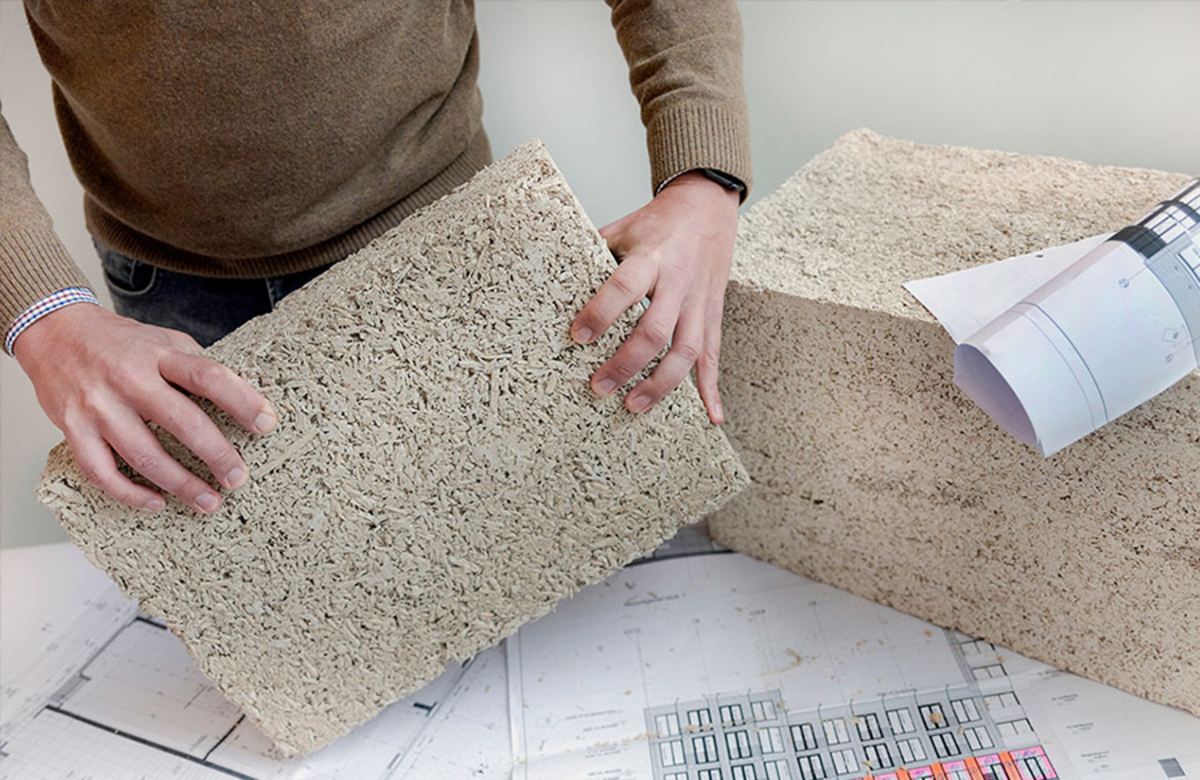
Conclusion
The construction industry is in the midst of a fundamental shift away from conventional building techniques and is about to enter an era of greater efficiency and innovation. The way we build is changing as a result of technological improvements, which present both opportunities and difficulties. Although fears about future job loss and unemployment as a result of automation may exist, the advantages of integrating cost saving technologies in construction like the Internet of Things (IoT), apps, and drones outweigh the disadvantages by a wide margin. Imagine a civilization where construction methods stress speed and safety in addition to cost-effectiveness.
By incorporating this cutting-edge technology, construction procedures are streamlined, resource management is optimized, and ecologically responsible building techniques that reduce carbon footprint are made possible. A well-rounded viewpoint is necessary, though. Although all seven cost saving technologies in construction have many benefits, there are a few issues that need to be taken into account. It is crucial to be aware of any potential drawbacks, such as the initial expenses of adoption and the requirement to upskill the workforce in order to use new technologies efficiently.
Additionally, as technology develops, the dynamics of communication between engineers and workers are about to change. A more coordinated and effective work process will come from the seamless information interchange that this improved connectedness will enable across many sectors of expertise. It’s crucial to understand that a systematic strategy is needed to pave the way for a construction industry driven by technology.
It is crucial to be aware of prospective changes in the labor market and to be dedicated to maintaining the welfare of the employees. The construction industry can in fact usher in a period of cost-effective, sustainable, and collaborative building methods by appropriately utilizing these cost saving technologies in construction.
Suggested article for reading:
7 Important Building Technology Ideas for 2024
101 World’s Best Modern Architecture Buildings
Resources:
Coins- global.com | Active collab.com | plan radar | wingtra | trimble construction | Global Infrastructure Hub
Journal Articles:
- Dams Barrie.Maskell Dan.Shea Andrew.Allen Stephen.Cascione Valeria. Walker Pete. Upscaling bio-based construction: challenges and opportunities. Building Research & Information .2023 ، 51: 7،764-782.DOI:10.1080/09613218.2023.2204414.
For all the pictures: Freepik

